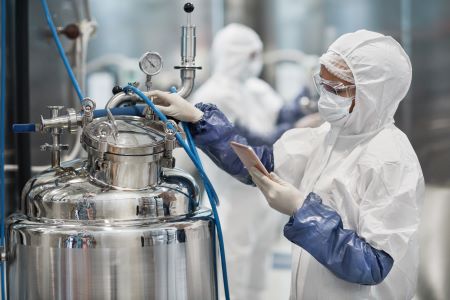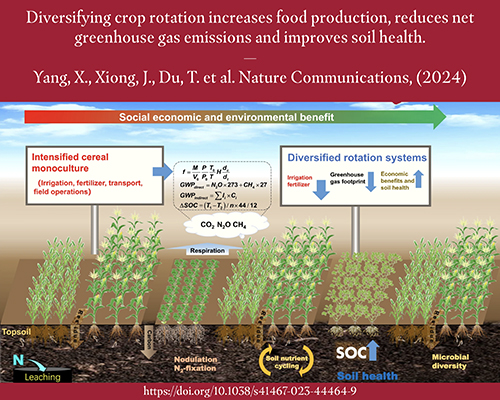Assessment of Carbon Capture and Storage (CCS) in Relation to Sustainable Development Goals
Overview of Carbon Capture and Storage Technology
- Concept: The process involves capturing carbon dioxide (CO2) emissions from industrial sources such as steel mills, cement works, and chemical factories before they enter the atmosphere.
- Process: Captured CO2 is transported via pipeline and injected into deep underground geological formations, such as old oilfields or mines, for permanent sequestration.
- Objective: To mitigate global heating by preventing industrial CO2 emissions, presented as a key technology for achieving net-zero targets.
National Investment and Strategic Alignment
- The United Kingdom has committed £30 billion to the development and deployment of CCS technology.
- This investment is positioned as a critical component of the national strategy to decarbonise heavy industry, thereby supporting SDG 9 (Industry, Innovation, and Infrastructure).
- The policy intends for CCS to serve as a primary mechanism for meeting climate targets under SDG 13 (Climate Action) without necessitating a fundamental overhaul of existing industrial processes.
Analysis of Technical Viability and Efficacy
- Persistent Engineering Challenges: Despite prolonged research and development, engineers have not yet perfected a consistently successful and scalable method for CCS.
- Geological Storage Limitations: A significant obstacle is the difficulty in identifying suitable subterranean sites that are deep enough and possess the required pressure to compress and securely contain CO2 indefinitely.
- Discrepancy in Climate Impact: A new scientific report concludes that the maximum potential atmospheric reduction from worldwide CCS implementation would be 0.7°C. This is significantly less than the 5°C to 6°C impact claimed by industry and government proponents.
Implications for Sustainable Development Goals (SDGs)
- SDG 13 (Climate Action): The finding that CCS can only contribute a 0.7°C reduction demonstrates its inadequacy as a primary tool for achieving the goals of the Paris Agreement. It cannot deliver the scale of change required for meaningful climate action.
- SDG 9 (Industry, Innovation, and Infrastructure): Over-reliance on this unproven technology risks diverting substantial investment from more viable innovations in sustainable industrial processes and green infrastructure, potentially hindering progress towards a truly sustainable industrial base.
- SDG 12 (Responsible Consumption and Production): CCS promotes an end-of-pipe solution that allows unsustainable production patterns to continue. Its limited effectiveness underscores the urgent need to redesign production systems to eliminate emissions at the source, in line with the core principles of SDG 12.
- SDG 7 (Affordable and Clean Energy): The technology’s failure to provide a robust solution for fossil fuel emissions reinforces the imperative to accelerate the transition to genuinely clean and renewable energy sources to meet global needs.
Conclusion and Recommendation
- The available evidence indicates that Carbon Capture and Storage is not a sufficient or reliable solution for addressing the climate crisis on the scale required.
- To align with the objectives of the Sustainable Development Goals, particularly SDG 13, policy and investment must pivot from mitigating emissions to a direct focus on halting the production of carbon dioxide in the first place.
Analysis of Sustainable Development Goals (SDGs) in the Article
1. Which SDGs are addressed or connected to the issues highlighted in the article?
-
SDG 13: Climate Action
- The article’s central theme is the effort to combat “global heating” by managing carbon dioxide emissions. It directly discusses a proposed solution, Carbon Capture and Storage (CCS), as a way to “save the world from global heating” and avoid “ever more dangerous weather,” which are core concerns of SDG 13.
-
SDG 9: Industry, Innovation, and Infrastructure
- The article explicitly mentions heavy industries such as “steel mill, cement works or chemical factory” as the sources of carbon dioxide. It focuses on a specific technology and innovation (CCS) and the necessary infrastructure (“pipeline,” “old oilfield”) required for its implementation. The discussion of a £30bn investment further connects to industrial and infrastructure planning.
-
SDG 7: Affordable and Clean Energy
- While not the primary focus, the article addresses the byproducts of energy-intensive industrial processes. The failure of a technological fix like CCS, as suggested by the article, implies that a transition to cleaner energy sources and more efficient production is necessary to halt CO2 production, which aligns with the goals of SDG 7.
2. What specific targets under those SDGs can be identified based on the article’s content?
-
Target 13.2: Integrate climate change measures into national policies, strategies and planning.
- The article provides a clear example of this target in action by stating, “Britain is committed to spending £30bn on this technology.” This represents a national strategy and financial plan aimed at integrating a specific climate change measure (CCS) into its industrial policy to achieve “net zero.”
-
Target 9.4: By 2030, upgrade infrastructure and retrofit industries to make them sustainable… and greater adoption of clean and environmentally sound technologies and industrial processes.
- The entire concept of CCS described in the article is an attempt to achieve this target. It is presented as a technology designed to retrofit heavy industries (“steel mill, cement works”) to make their processes more environmentally sound by capturing their primary pollutant, CO2. The article, however, questions the effectiveness and viability of this specific technology.
-
Target 13.1: Strengthen resilience and adaptive capacity to climate-related hazards and natural disasters in all countries.
- This target is implicitly addressed through the article’s concluding warning. By stating that the alternative to halting CO2 production is “ever more dangerous weather,” the article highlights the need for effective climate action to prevent the worsening of climate-related hazards, thereby underscoring the importance of building resilience.
3. Are there any indicators mentioned or implied in the article that can be used to measure progress towards the identified targets?
-
Total Greenhouse Gas Emissions
- The article’s primary focus is on preventing carbon dioxide from getting “into the atmosphere.” This directly implies that a key metric for success is the total volume or concentration of atmospheric CO2, which is a primary indicator for climate action progress (related to Indicator 13.2.2).
-
Financial Investment in Climate Mitigation
- The article explicitly mentions the “£30bn” that Britain is committed to spending on CCS technology. This figure serves as a direct, quantifiable indicator of a country’s financial commitment to a specific climate strategy, which can be used to track progress on national planning (Target 13.2).
-
Effectiveness of Mitigation Technology (Temperature Reduction Potential)
- The article cites a report that quantifies the maximum potential impact of CCS as a “0.7C” reduction in global heating. This measurement, contrasted with the “5C to 6C” claim, serves as a critical indicator for evaluating the actual environmental soundness and effectiveness of a technology intended to make industries sustainable (Target 9.4).
Summary Table: SDGs, Targets, and Indicators
| SDGs | Targets | Indicators |
|---|---|---|
| SDG 13: Climate Action | Target 13.2: Integrate climate change measures into national policies, strategies and planning. |
|
| SDG 9: Industry, Innovation, and Infrastructure | Target 9.4: Upgrade infrastructure and retrofit industries to make them sustainable… with… greater adoption of clean and environmentally sound technologies. |
|
| SDG 13: Climate Action | Target 13.1: Strengthen resilience and adaptive capacity to climate-related hazards. |
|
Source: theguardian.com







